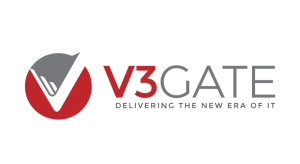AI offers government agencies unprecedented opportunities to enhance efficiency, improve decision-making and deliver better services to citizens.
“Generative AI specifically enables agencies to automate complex tasks such as content creation, data analysis and predictive modeling,” said Maria Fahmi, Executive Vice President, Technology & Engineering, with V3Gate, which specializes in providing emerging technology to the public sector. “It empowers agencies to innovate rapidly and derive insights from large datasets that were previously impractical to process manually.”
But agencies may struggle to bring AI to life. They may face challenges deciding where to house AI infrastructure and when creating guardrails for safe data usage, including bias removal and data authenticity. Best practices can help implement AI safely, securely and effectively.
Tips for Success
Agencies should start by developing a clear AI strategy, one “aligned with their mission objectives and operational needs,” Fahmi said. “Identify specific use cases where AI can add value, whether it’s improving service delivery, enhancing operational efficiency or addressing regulatory compliance.”
It’s important to prioritize data quality to build trust with end users. This means ensuring that the data you’re collecting and processing is authentic, reliable and relevant. Inaccurate or low-quality data can lead to misleading outputs.
It’s also important to prioritize strong data governance and security. “Implement robust data governance frameworks to ensure the ethical use of data and protect against breaches,” she said. “Establish stringent security measures to safeguard sensitive information and comply with relevant regulations.”
Agencies must promote accountability, which means being open and honest. “Ensure transparency in AI algorithms and processes,” she suggested, “to build trust among stakeholders and the public.” Document AI methodologies and practices to facilitate audits and demonstrate compliance. And organizations must continuously educate staff on AI tools, to maximize AI benefits.
“Equip your workforce with the necessary skills and knowledge to leverage AI technologies effectively,” Fahmi said. Trainings and workshops offer opportunities to upskill employees in AI concepts, data analytics and cybersecurity. Interacting with AI immersively is important.
Choosing the Right Partner
And agencies should choose a vendor that has demonstrated expertise and knows the public sector. “It’s important to have a partner that understands the specific challenges the government faces,” Fahmi explained.
A trusted vendor “can deliver tailored AI solutions that align with your agency’s objectives and regulatory requirements,” she said.
V3Gate, for example, has expertise in leveraging technologies such as AWS Generative AI to streamline operations, enhance decision-making and improve services, she noted, and is “uniquely positioned to provide customers with an agnostic viewpoint on AI solutions.”
“Our approach,” she said, “ensures agencies derive practical, measurable value from AI investments while maintaining compliance and security.”
AI is no longer on the horizon — it’s here — and “the best thing to do is be proactive, because otherwise you will have to force-fit solutions with limited time,” Fahmi said. The right partner can lay out options and provide valuable guidance for navigating today’s complexity.
This article appears in our guide, “Getting Practical with AI.” For more examples of how agencies are making real-world use of AI technology, download it here:







Leave a Reply
You must be logged in to post a comment.